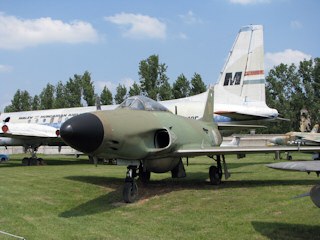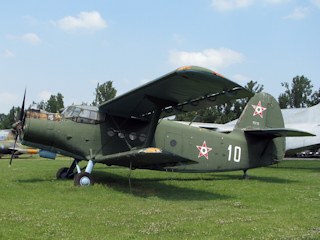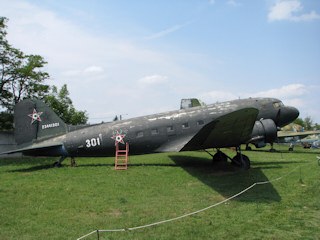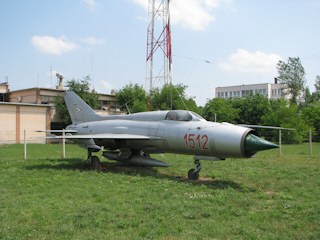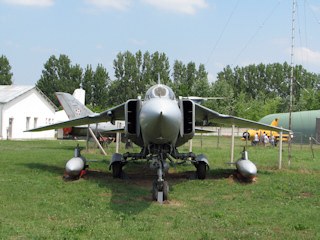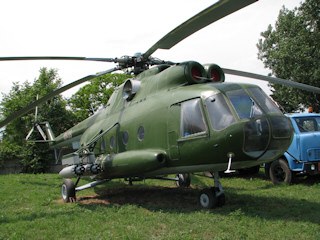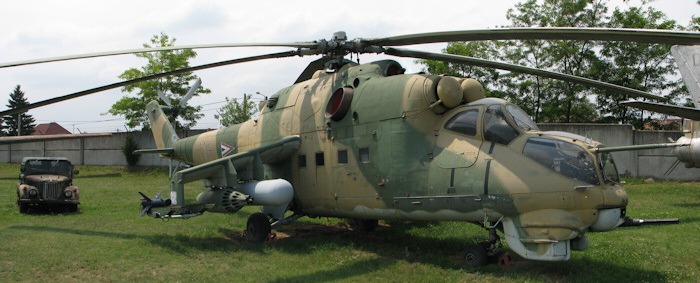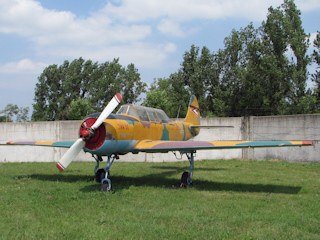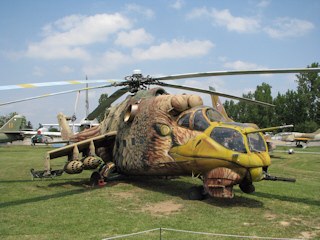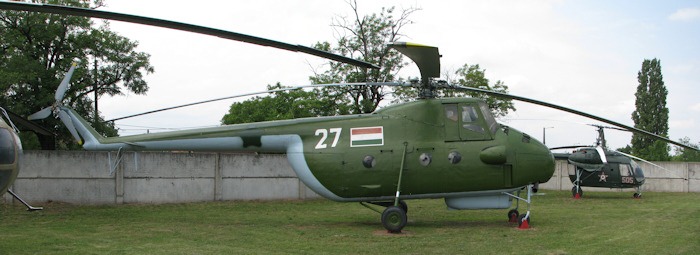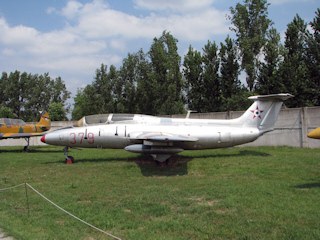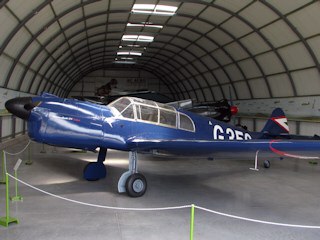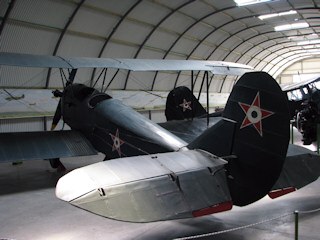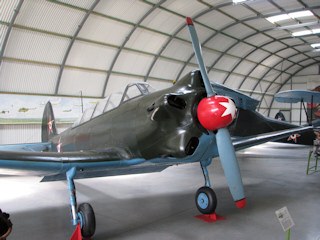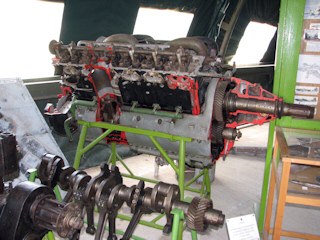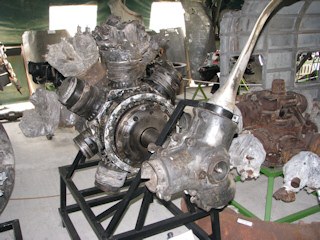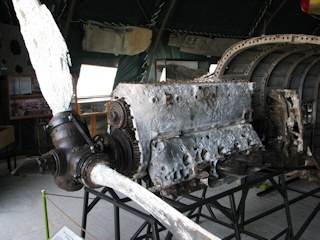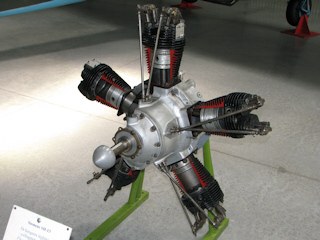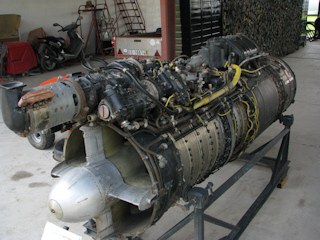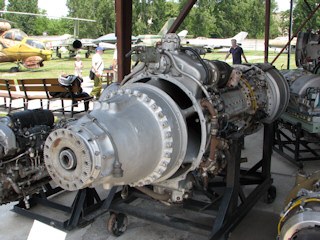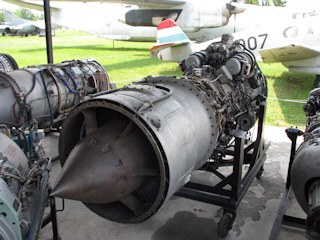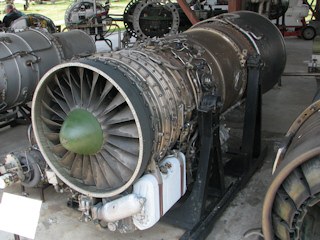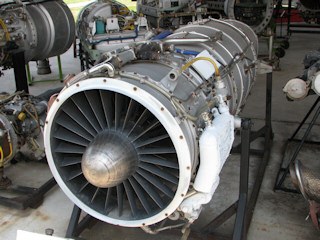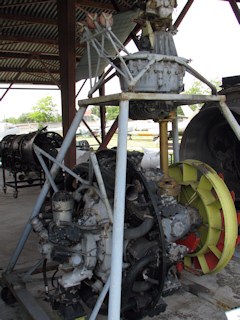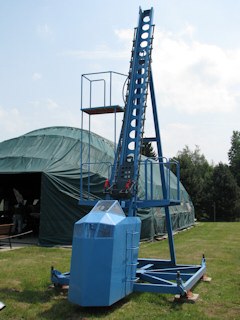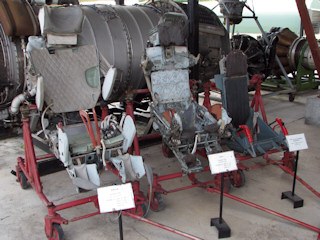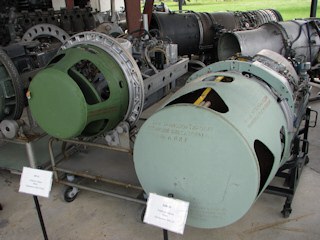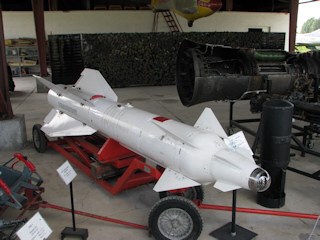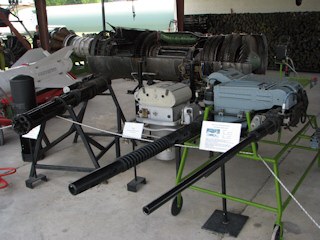Museum of Aviation, Szolnok
It's been a while since I my previous page about the military aviation museum in Szolnok-Szandaszőlős - it is time to see how the collection expanded since that! The pictures were taken in May 2011.
Let's start with two planes that can be considered "exotic", even though their country of origin is not exactly one we would link to the attribute "exotic": Sweden. To the left a Saab JA-37DI "Viggen", to the right a Saab J-32E "Lansen".
From the freighter/parachute section: an An-2 (built in 1978, ex-HA-MDG) to the left, a Li-2T (once also known as HA-LIS, built in 1952) to the right.
This area used to be a storage area for wracks, now it's a row for types previously not seen, or only seen in a bad condition:
I already photographed the local "MiG alley" last time, but since then there are a few newcomers: to the left a MiG-21PF from 1965, to the right a MiG-21bisAP in the "aggressor" livery of the display unit "Sky Hussars".
To the left: a MiG-23UB in its older, all-grey paint scheme. To the right: Mi-8T in the livery it was wearing when the type was introduced in Hungary (1969).
A Mi-24D in its usual paint scheme (and weapon payload). To the left of it there's also a GAZ-69, the standard "russian Jeep" of the 1960s.
To the left: a Yak-52 trainer. To the right: after the "normal" Mi-24, here's one with a special livery, nicknamed "Tweety".
A Mi-4A, brought from Eastern Germany, because none of the original hungarian examples (there were only four IIRC) survived. Behind it you can also see a Ka-26.
To the left: this L-29 "Delphin" used to have a camouflage earlier, now it sports its original looks. To the right: an L-200D "Morava", one of the nicest planes I've ever seen.
Another panorama, this time of the Il-28 bomber.
A small hangar was build not long ago on the area of the museum, to house some really old artifacts. To the left: a Nord 1002 "Pingouin", the french-made version of the Messerschmitt Bf-108 "Taifun", wearing pre-WW2 hungarian livery. To the right: a polish-built Po-2 (CSS-13), formerly HA-PAU (probably used for gliders), from 1954.
To the left: a Yak-12 built in 1951. To the right: a Yak-18, ex-HA-FAE, built in 1950.
There's a large military tent next to the small hangar, mainly with recently recovered wracks and plane parts from WW2. To the left: the nose of an Il-2m3 salvaged from Lake Balaton. To the right: a cutaway demonstration piece of a Mikulin AM-42 engine used on the Il-10, with the removed crankshaft in the foreground.
To the left: the Shvetsov AS-82FN engine of a La-5FN shot down during WW2. To the right: remains of a DB605 engine of a Me-109G6, with a part of the fuselage of a Fiat G.12 in the background.
There are also complete angines on display, like the Siemens-Halske Sh-13A to the left, or the Tumansky RD-9B turbojet to the right (as used on the MiG-19).
An Ivchenko AI-20 turboprop engine, as used on the An-12, An-32, or the Il-18.
To the left: a Tumansky R-11 turbojet (probably the F2S-300 model from a MiG-21), to the right: an Ivchenko AI-25TL turbofan engine (probably out of an L-39 "Albatros").
To the left: the drive train of a Mi-1 helicopter, with the Ivchenko AI-26V radial engine below and the reductor above. To the right: an ejection simulator, renovated recently.
To the left - a couple of real ejection seats, from left to right: KM-1-M (MiG-21 MF, bis and UM, MiG-23 MF), ShK-1-M (MiG-21 F13, PF, U), and the jettison seat of a MiG-15. To the right - on-board locators: RP-22 (MiG-21 bis) and Zaphire-23 (MiG-23 MF).
A row of weapons is also displayed, this is just a small selection of them here. To the left: an H-29L air-ground missile. To the right: a GSh-6-30 - the 30mm six-barrell rotating machine cannon of the MiG-27, and the weapon cradle of the MiG-15, containing a 37mm and two 23mm cannons. Between them an aerial reconnaissance camera can be seen.
And to conclude this page, here's a panorama of the slightly worn Il-18V four-engine passenger turboprop of Malév, HA-MOA, built in 1962. It was retired and flown here in 1987, it could use a new paintjob now!
And at the end, here's a tip: the museum now has a website, with lots of pictures and some really interesting trivia - partially in english!
Back...
Mail me...

